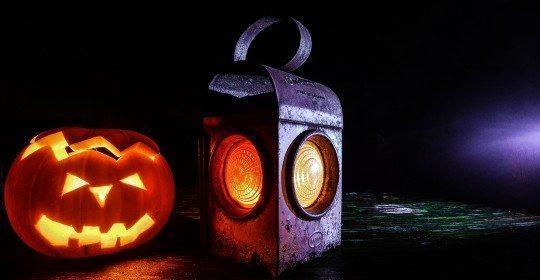Trick or Treat Emergencies to Avoid this Halloween

It would be great if the only things to beware of during Halloween were those that go bump in the night. Unfortunately, it’s the natural, rather than the supernatural, dangers that send thousands of adults and children to the emergency room every year. In fact, Halloween is ranked as one of the most hazardous of all our national holidays, with more people injured (sometimes seriously) along with Memorial Day and the Fourth of July.
In the hope of helping keep all monstrous creatures fighting fit to haunt another year, we’ve compiled this list of the most common trick or treat emergencies:
Pumpkin Problems
We all know it wouldn’t be quite the same without a pumpkin or two lighting up the window or porch. But sharp knives and slippery pumpkins are not the best mix when it comes to avoiding cuts.
It’s recommended that children should never be allowed to carve pumpkins. Let them help with other aspects of preparing jack-o’-lantern’s, but take care of the carving yourself. Hand and finger injuries from knife slips are the most common Halloween emergencies in the 10 – 14 age group.
Always use knives specifically designed for pumpkin carving as these are less likely to get stuck or slip in tough gourd skins, and always work slowly, cutting small sections at a time while directing the knife away from yourself. Never hold the pumpkin on your lap, or work in other insecure, awkward positions. Have the pumpkin on a sturdy, steady surface, and don’t allow your attention to wander.
Having carved the pumpkin, the next hazard they present is fire. Yes, they look fantastic with candles inside but if you’re using real flames, there are a few safety precautions to take:
- Place flames away from curtains or other decorations that might catch fire.
- On porches, position them so costumes can’t accidentally brush over the flames.
- Consider battery-operated candles. They still flicker nicely but are much safer.
Costume Capers
Dressing up is all part of the fun, no matter what age you are. Unfortunately, costumes are often chosen purely for effect with little thought given to safety until it’s too late. Practically anything goes on Halloween, and you’ll likely see fairy princesses with long, trailing veils as often as zombies dragging bandages or vampires in draping cloaks. Top tips for costume safety include:
- Choosing fire-resistant fabrics. Bought costumes should have a label indicating the fabric is fire-resistant so that’s fairly easy, but if you’re making costumes at home, be extra vigilant when buying materials.
- Making sure costumes fit. Just because it’s only for one night doesn’t mean you can get away with clothing that slips, trails or easily falls down. Beware of anything that can cause a child to trip and fall, especially around traffic or in crowds, but also in common household situations where ill-fitting clothing could cause kids to tumble down steps or stairs. Make sure masks don’t hamper vision or breathing. Face paint may be a safer alternative as it can’t slide out of place.
- Being seen in the dark. Reflective tapes, flashlights and glowsticks all help keep children visible in the dark. They’re also lots of fun, so go overboard with the light play.
Roadside Risks
The roads are busier during Halloween celebrations, and with everyone more concerned with fun than safety, the risks of injury are higher.
Teach kids not to run out into the road from between parked cars, and to walk along sidewalks rather than run from house to house. Make full use of flashlights in dimly lit streets, not just so kids can see where they’re stepping, but so others (including drivers) can see them approaching.
Always accompany small children and don’t let them approach houses where you don’t know the occupants. It’s also a good idea to stop kids running across dark lawns since they don’t know if there’s furniture or yard ornaments they may fall over or run into.
Remember the safety in numbers motto. Never let kids out to trick or treat by themselves, and caution them to always stay with their friends and have an agreed way of reconnecting if they get separated.
Keeping Safe Houses
Householders can play a part in keeping Halloween safe too. For those who welcome trick or treaters, simple precautions such as making sure welcoming jack-o’-lanterns containing candles are away from doorways, or removing obstacles from front lawns, can help excited kids avoid a trip to the emergency room.
We hope you have a safe and fun Halloween that ends comfortably in your own bedroom rather than our emergency room. But if you do need us, we’re here.
SkiptheWaitBook an Appointment Today




